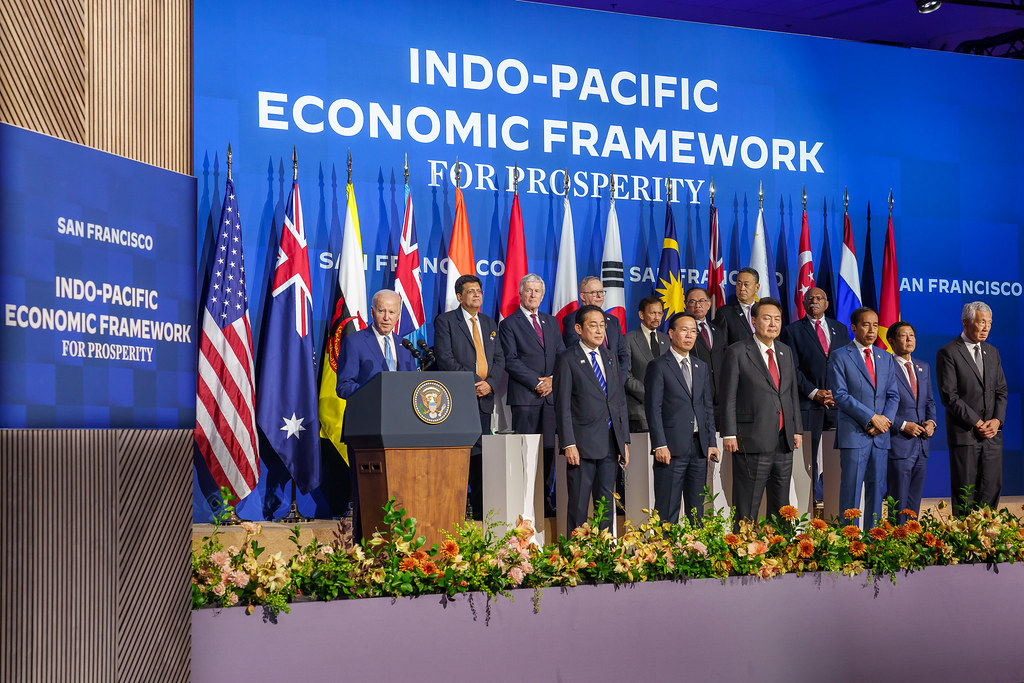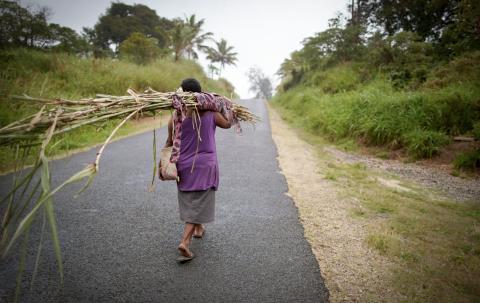Governments around the world are facing complex intersecting challenges: how to achieve supply chain diversification and resilience while simultaneously pursuing more ambitious climate action and reinvigorating progress on international development.
China’s dominance of critical mineral and clean energy supply chains poses economic security risks, in addition to human rights concerns. Meanwhile, an estimated trillion-dollar financing gap in developing countries (other than China) must be overcome if the world is to deliver on its goals for climate and development.
Few solutions currently on the table can meet the scale of what is required. This is before also surmounting the constraints imposed by the politics of cost-of-living pressures at home and geopolitical rivalry internationally.
The Australian government last week took the significant step of announcing a $2 billion investment facility aimed at supporting the clean energy transition and infrastructure development in Southeast Asia. The ink on that announcement is barely dry. Yet, as welcome as that decision is, it is also clear that this is only one part of the solution.
To make a serious difference to the problems at hand, Australia and its partners will need to think bigger. This means investing in substantial new institutional capabilities especially for knowledge sharing and – most importantly – finding ways to strengthen multilateral ties in this region. They also need solutions that help to close financing gaps and build investment pipelines by attracting new projects and co-investors.
Creating a new kind of multilateral bank could provide a compelling way forward, integrating economic security, climate, and development objectives within a single institution. This new form of bank would seek to combine the best parts of existing financial institutions including the multilateral development banks (MDBs), green banks, and export credit agencies.
The World Bank and other MDBs notionally offer a powerful financial model for delivering the scale of funding required for climate and development. With US$19.2 billion of paid-in capital, the World Bank has been able to provide more than US$750 billion in loans over its lifetime. By helping build new capabilities in developing economies, MDBs can also support global supply chain diversification.
The Western governments that dominate the MDBs recognise the opportunity that exists to expand the role of the banks through reform and increasing their capital. But this has proven difficult to realise in practice. Injecting additional MDB capital would inevitably open the vexed issue of increasing China’s voting power at these institutions. In addition, China’s state-owned firms are often among the top beneficiaries when it comes to winning MDB procurement contracts.
The MDBs have also over decades become bureaucratic behemoths, struggling with too much red tape and risk aversion. This has made them difficult to reform and limited their impact.
Hence, there is both a need and opportunity to establish a new kind of multilateral bank, one more responsive to today’s economic security, climate, and development challenges that can bring together the best elements of various existing public financial institutions.
This includes not only the powerful financing model of the MDBs but also their role in working closely with developing country governments to support project development and critical behind-the-border reforms. The new kind of multilateral bank should seek to replicate the highly specialised knowledge sharing and financial innovation functions of national green banks, such as Australia’s Clean Energy Finance Corporation. And it should adopt the economic security objective of bilateral export credit agencies while multilateralising this to support the friend-shoring of supply chains across a group of partner countries.

The Indo-Pacific Economic Framework (IPEF) could be the ideal forum for this modern multilateral bank.
A US-led initiative, IPEF draws together 14 governments around the region (China is not a member). It is designed to support fair and resilient trade, to diversify and secure key supply chains, and to support broader economic development and decarbonisation aims. But negotiations are progressing slowly, in part as developing countries have little positive incentive to meet America’s “high standard” ambitions when better market access to the United States is not on the table.
An IPEF bank could provide the positive incentive required at a scale for the framework to work. It should be built around two pillars: finance and knowledge sharing. On finance, it would provide the capital needed for the clean energy investments and friend-shoring that IPEF seeks to promote. Equally important, it would institutionalise knowledge sharing among its members around new technologies, transaction structures, and market risks. This would allow an IPEF bank to target different projects and private sector co-financiers to existing public financial institutions, key to catalysing greater investment.
Leading the establishment of an IPEF bank would be a significant economic and foreign policy legacy for the Albanese government in Australia and align with the vision it has outlined for regional engagement. It would also be a powerful way for the United States to demonstrate its commitment to shared prosperity and climate justice while operationalising the new Washington consensus.
For the new major powers of India and Indonesia, establishing an IPEF bank would be an important leadership opportunity and bestow considerable prestige – similar to Japan in the 1960s with the Asian Development Bank and China last decade with the Asian Infrastructure Investment Bank. It would also create a multilateral bank where members of the Global South can have a commensurate role in its governance, without needing to contend with concerns about increasing China’s influence as at the existing MDBs.
Any decision to complicate an already crowded international finance landscape must be considered carefully. Even initiating a process for such an ambitious idea would be a heavy diplomatic lift. But in a divided world facing multiple overlapping crises, it is an idea that should be on the table.


